

Theme
Medical Physics
Title
EPID based Quality Assurance Application for Clinical Linear Accelerators
Background
Radiotherapy departments invest money to purchase many commercial quality assurance tools for maintaining treatment units. Many of the commercial QAsystems provide an application for analysis of tests as well as a database for record keeping. These systems usually can not be integrated with one another making tracking and record keeping os results a challenging task.
In our department, many QA assurance tests are performed with portal imagers installed in our Varian TrueBeam linncs. However, analysis of the images are done using visual assemesment of dose profiles accross the portal image and the results are stored in a excel sheet.
To address our needs, we designed and built a Graphical User Interface application with modules to analyze portal images1 for different tests. The application also stores results into a MySQL database server for record keeping and trend monitoring.
Summary of Work
A GUI application was built using Xojo programming environment and programming language. The application imports generic Dosimetry Exchange Format (DXF) files that are exported from the ARIA Portal Dosimetry application. Once the DXF file is imported, the application distinguishes the test, linac unit, and beam energy from information embedded in the DXF file and launches the suitable QA module to analyze the image data. After accepting the test results by the user, the application stores all relevant information (machine, beam, date, etc..) into a MySQL database server installed and configured on a desktop computer connected to our Radiation Oncology Local-Area-Network. The application can also easily retrieve stored data allowing the user to monitor trends for the tests. In addition, the application, through a graphical calendar, allows users to quickly observe tests done. A screen shot of the graphical calendar is shown in the fig. 1.
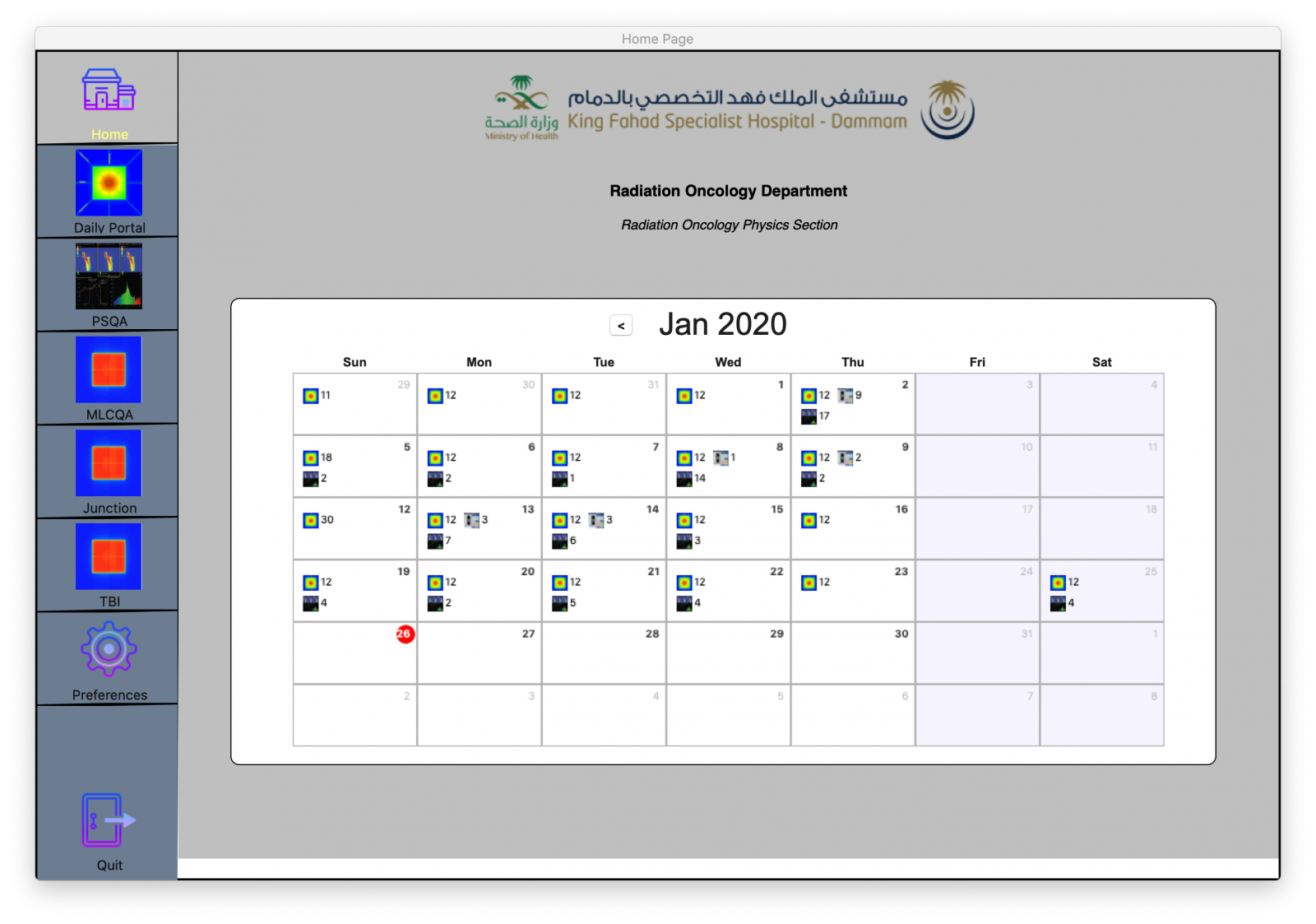
Fig. 1: The home page of our application showning a graphical calender. The test types and the number performed on each date can be visually seen.
Summary of Results
Output constancy:
Portal images for photon beams open fields with collimator settings of 20x20 cm2 are used for daily machine constancy check. The application compares the dose registered in the center of the image as well as the symmetry and flatness of four profiles (radial, transverse and 2 diagonal) to reference values established after the beam output calibration and annual beam quality assurance. Graphical interfaces of the module are shown in the fig. 2.
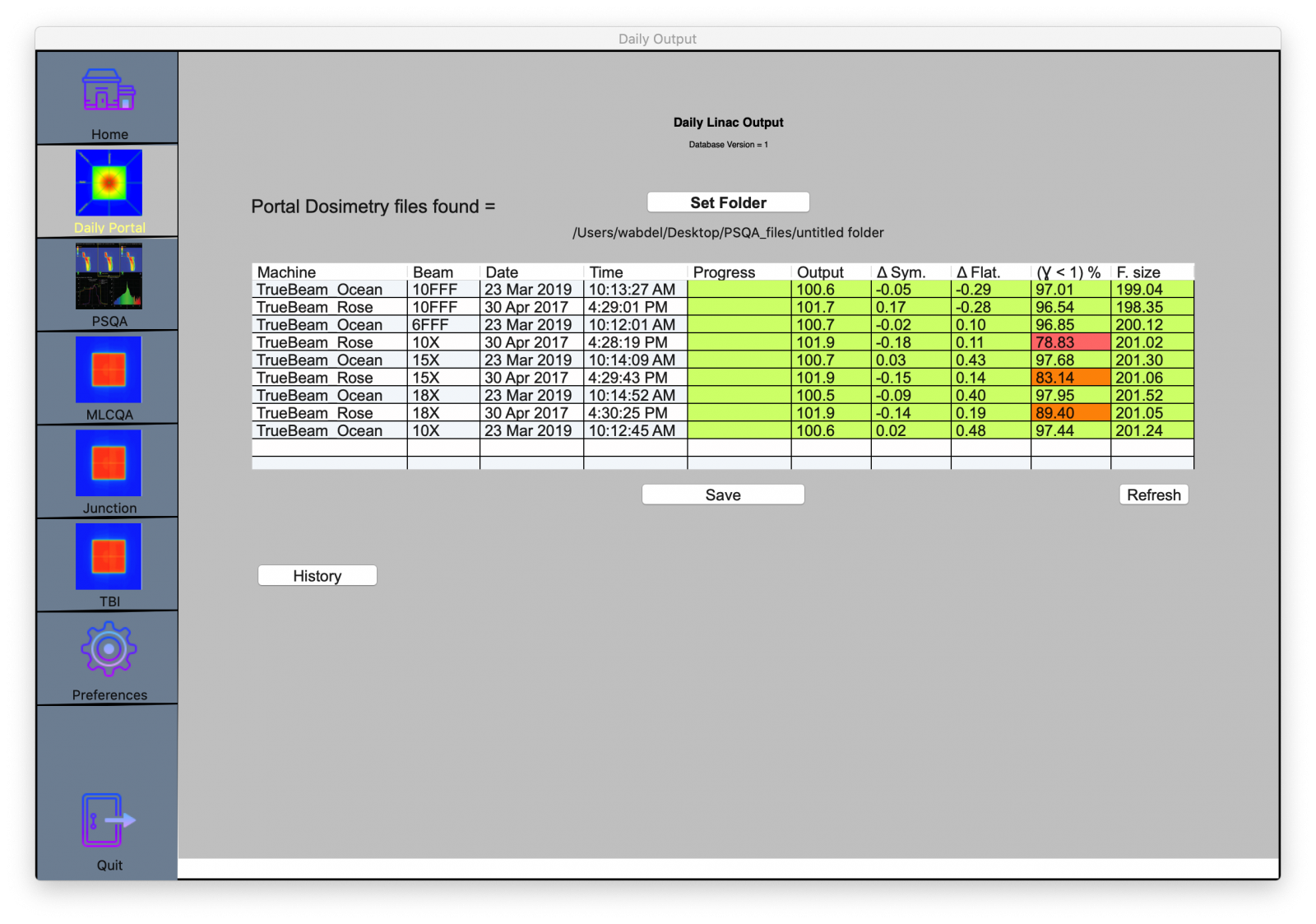
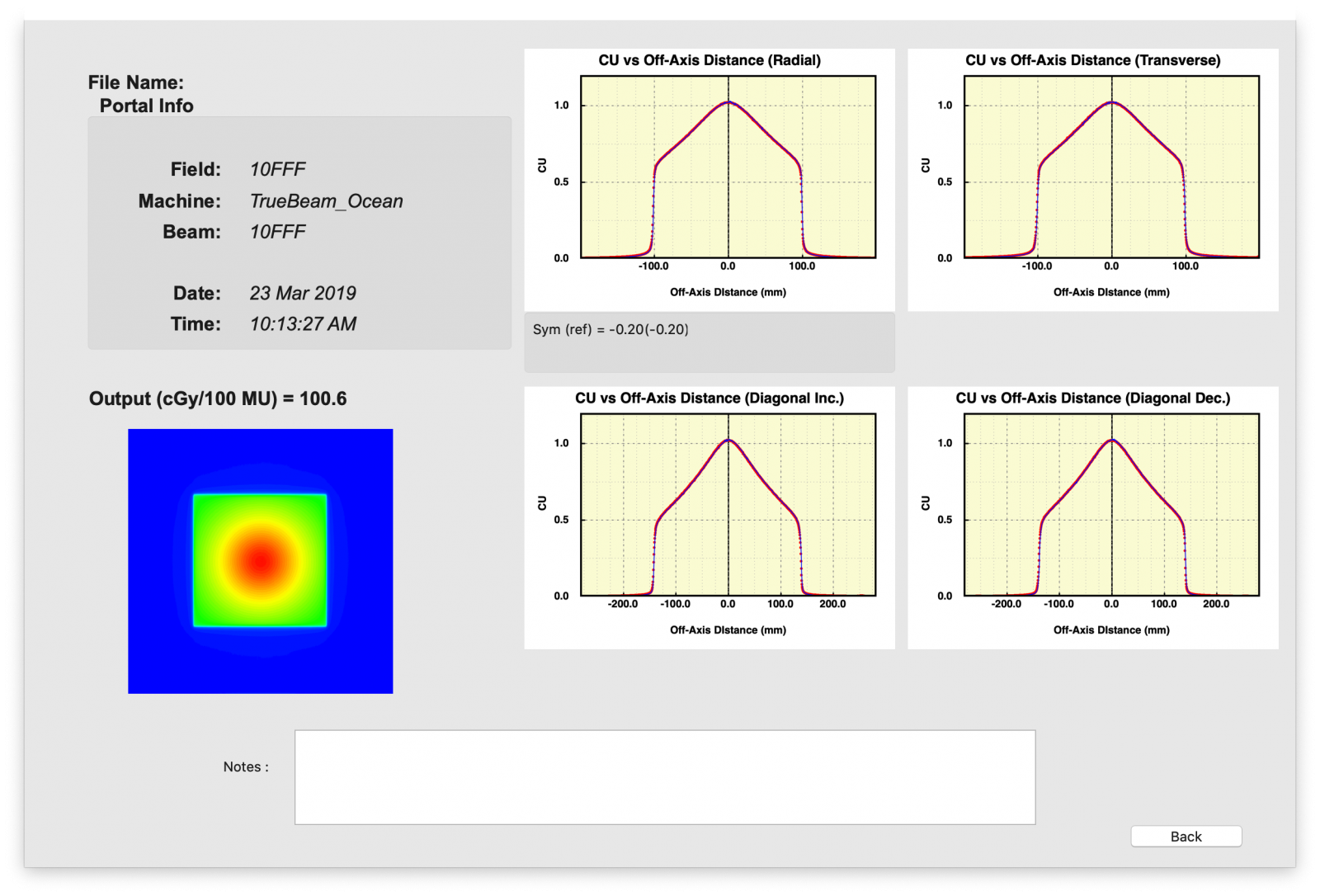
Fig. 2: (Left) Daily portal window window analyzes photon beams output constancy. The module compares a daily portal image to a reference image and determines beam output and symmetry and flatness of four profiles extracted from the portal image. Summary of the analysis are listed for each portal image analyzed. (Right) An application window showing the four profiles for a daily portal image and the reference image.
The user may also view the output of beam with respect to time and to inspect trends in linac output. Figure 3 shows an application widow where the a plot is generated for a selected parameter, machine, and beam.
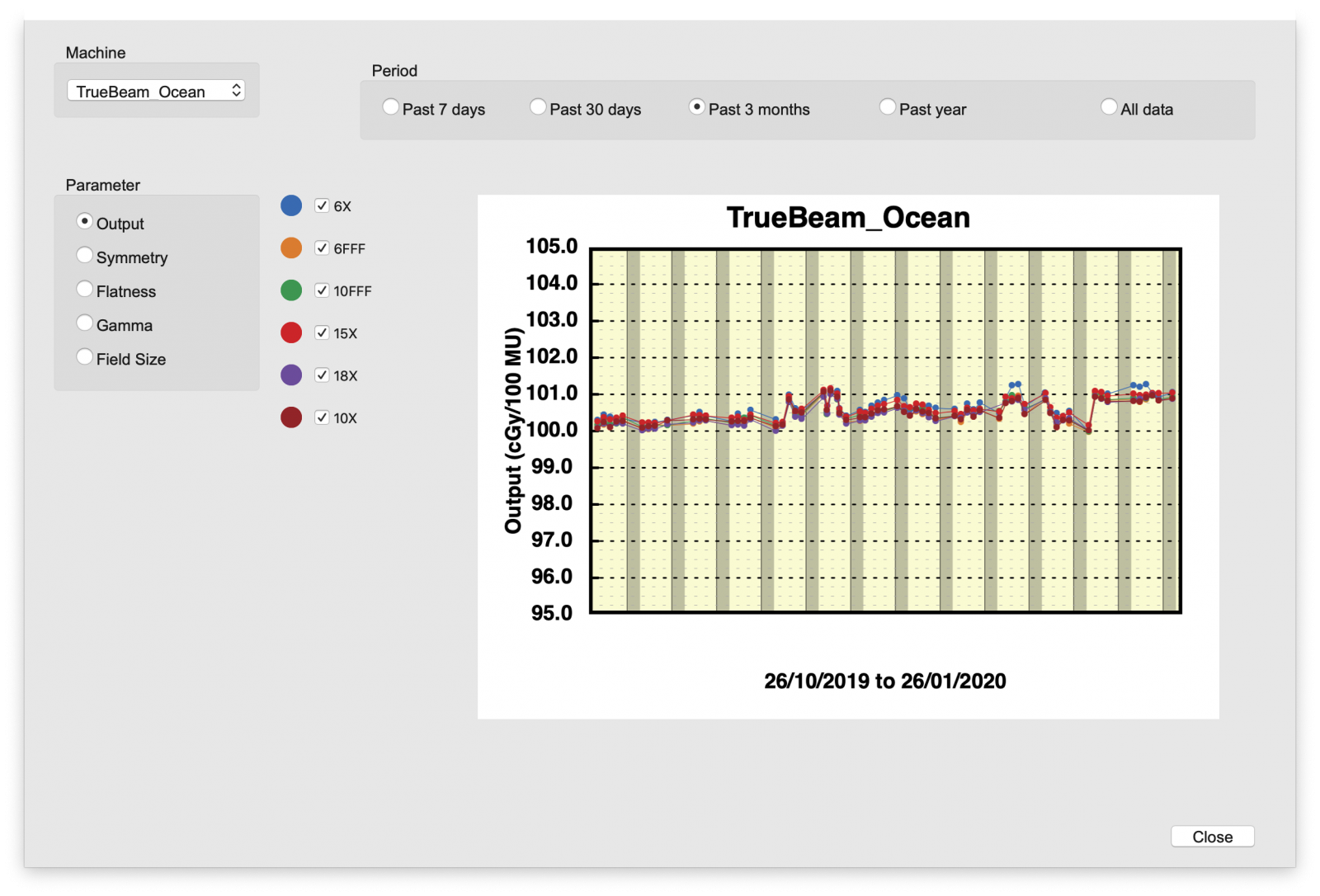
Fig. 3: A window showing a plot of beam output as a function of date.
Half-beam junctions test
Half-beam junction position and relative dose for photon beams is a regular test conducted in our department. This test is carried-out using 6 MV x-ray beam where the 4 quadrants of a 20x20 cm2 square field are expose independently. The application then exports and combines the 4 exposures into a single image showing the junction location and intensity along the x- and y-jaw pairs.
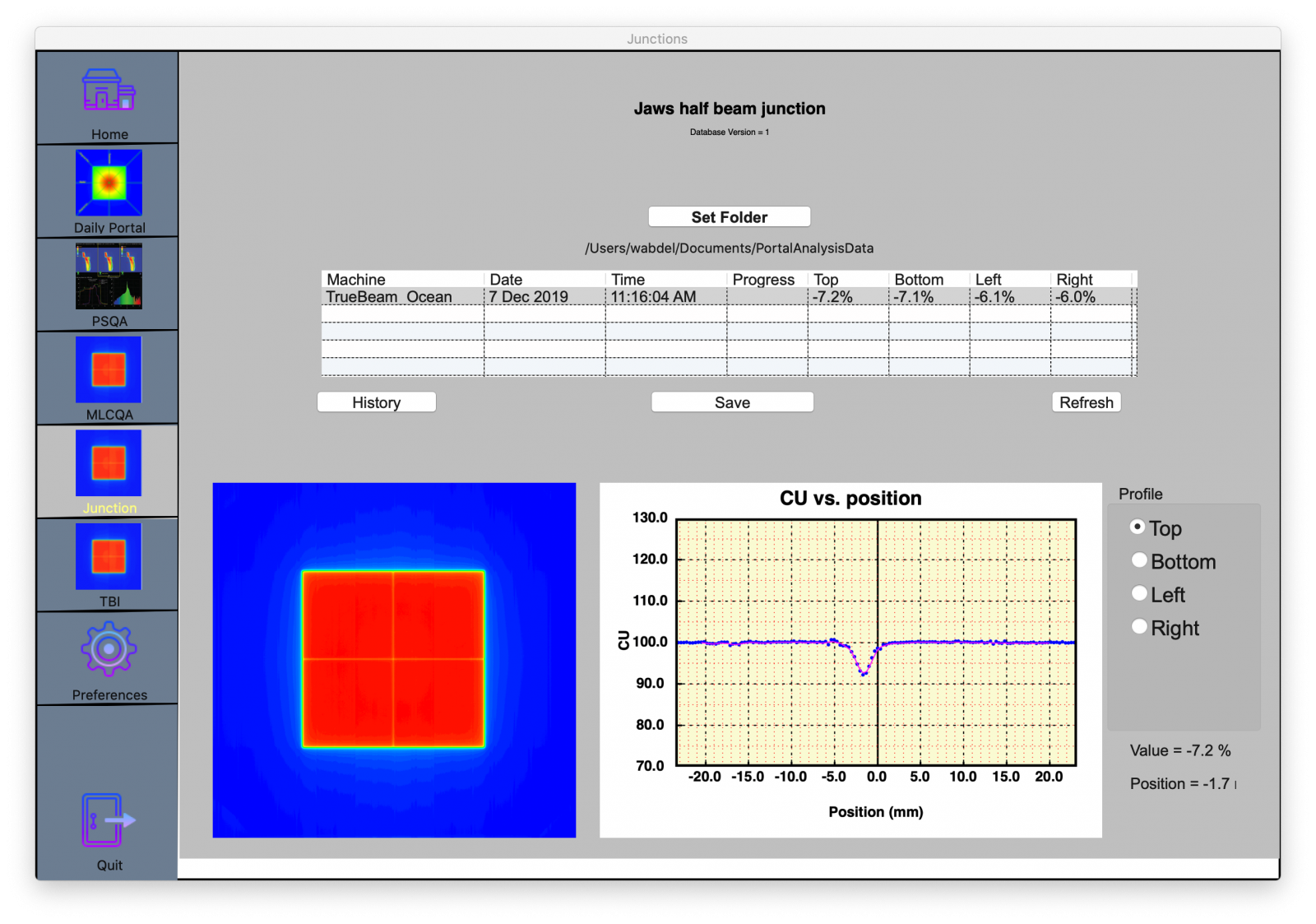
Fig. 4: Half-beam junction module. The application combines the four quadents portal images for a 20x20 cm2 field and analyzes the x- and y-jaws junction positions and dose.
Conclusion
The application proved to be a convenient clinical QA tool in our department by saving valuable resources and time in daily linac output constancy chec and other routine QA tests. Work is underrway to include other routine tests such as MLC picket fence and output vs gantry angle.
Acknowledgement
The authors would like to acknowledge testing and feedback by Ms.Iqbal Al-Amri and Dr Tharmarnadar Ganesh on the application.
References
1. B. Sun, S.M. Goddu, S. Yaddanapudi, C. Noel, H. Li, B. Cai, J. Kavanaugh, and S. Mutic, "Daily QA of linear accelerators using only EPID and OBI," Med. Phys. 2015 Oct;42(10):5584-94.


